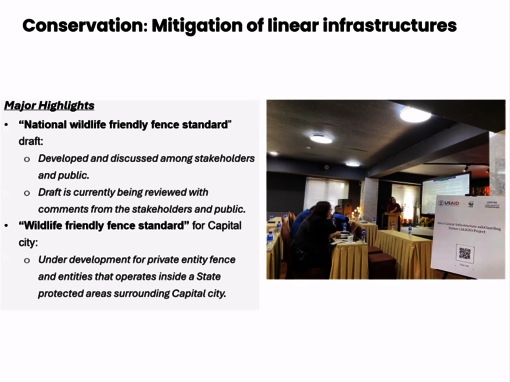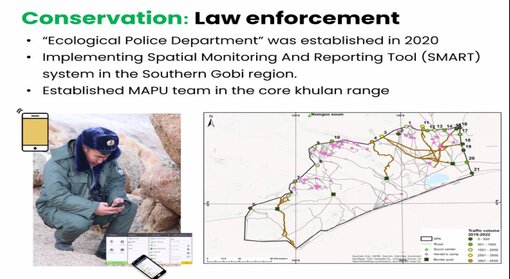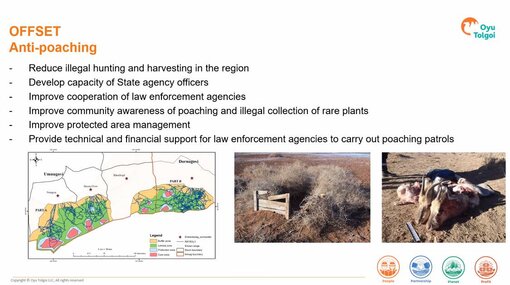In order to safeguard the integrity of the last large-scale wilderness areas of the Gobi desert, any dangers that threaten the integrity of the existing protected areas must be ruled out. To this end, the major nature conservation organisations, scientists and representatives of several relevant Mongolian ministries met for a workshop in Ulaanbaatar. The event was held in a hybrid format, which also enabled the involvement of international organisations.
The State Secretary of the Ministry of Environment and Tourism of Mongolia expressed his determination to apply the existing nature conservation laws to avert threats to the unique desert landscapes as well as the last populations of large mammals such as gobi bears, wild camels but also wild asses, gazelles and snow leopards. The actual and potential threats were discussed at the workshop.
These include climate change, which already demands a high level of adaptability from species, as well as the impact of inland economic development such as mining and linear infrastructure development. Only if these threats are excluded is there a chance of securing these last wilderness areas as a World Heritage Site under the protection of UNESCO.
The nomination of the Great and Small Gobi protected areas aims to close one of the few major gaps in the World Heritage Convention. It encourages national decision-makers to invest in the protection of these outstanding landscapes and ecosystems and to further improve their management.
![[Translate to EN:] Banner Stiftung](/fileadmin/_processed_/b/c/csm_banner-stiftung_486d1296e2.jpg)



